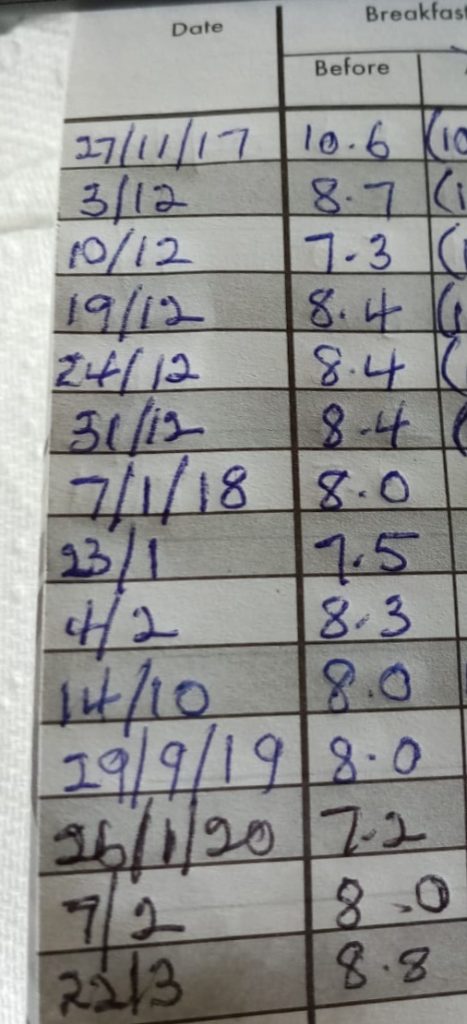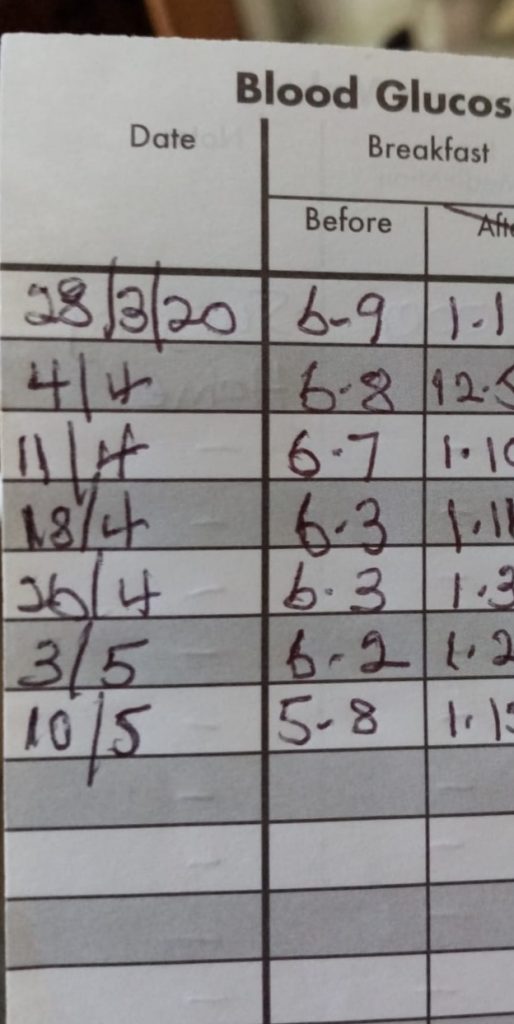
Diabetes type 2 is the fastest growing modern disease in the world. It’s a lifestyle disease, and as such – it can be reversed by lifestyle changes! It’s also a condition which is particularly relevant in these current times where it has been found to be one of the underlying factors that contributes to poor metabolic health which in turn leads to unfavourable outcomes with the current pandemic. At the moment, people with diabetes are deemed vulnerable and asked to stay home for many weeks if not months.
Firstly we need to distinguish between type 1 and type 2 diabetes.
Type 1 is a genetic condition and not something that can be rectified with lifestyle – and this is not what we are talking about here.
Type 2 however is almost completely dictated by diet and lifestyle and as such can be dramatically improved, and even reversed, in a matter of weeks.
When we have too much glucose (sugar) in the blood stream, the hormone insulin is released by the liver and pancreas to take it out of the blood and in to the cells to be used as energy. Insulin does this vital job, and this is all fine until we constantly flood the body with glucose and our cells become full and can no longer take on any more glucose. Now, there is too much sugar in the bloodstream and so more and more insulin needs to be produced to shuttle it in to the cells, but the cells are full which means that the insulin receptors at the cell membrane (which let the sugar in to the cell) become overwhelmed and become resistant to the insulin.
This is known as insulin resistance and is what drives diabetes, leading to high blood glucose levels, high insulin levels and also nutrient deficiencies. These are all major driver in chronic disease. It’s estimated that up to 70% of the UK population has insulin resistance.
Once the glucose is safely out of the blood stream and inside the cell, there can also be issues with utilising it. In order to optimally convert the glucose to energy (ATP is the body’s currency of energy), we need to have good mitochondrial health, a vital oxidation rate, and we also need our detox pathways open in order to eliminate toxic metals.
When we eat high refined carbohydrates such as biscuits, cakes, donuts, even bread and pasta, these break down in to sugar in the body, causing a spike in blood sugar. As we know, insulin is then released to bring down the sugar levels in the blood, which then in turn causes a sugar crash. So the body releases adrenaline to bring up our sugar levels and so we are in a constant yo-yo effect of ups and downs in sugar levels. This causes stress in the body and a constant release of hormones to keep everything in balance in the blood. When this goes on for too long, the body will release cortisol rather than adrenaline and this is a big driver of inflammation in the body. (Also cortisol is made from cholesterol and so the body ends up producing more cholesterol in order to be able to keep up with the increased need for cortisol).
But the story of diabetes is not just about sugar. There are many factors which can contribute to insulin resistance and type 2 diabetes. These include poor nutrition – not just eating sugar and refined carbohydrates but also nutrient deficiencies such as zinc, chromium, potassium, as well as toxic metals in the body. These metals displace minerals and aren’t always being efficiently eliminated by the body. Our levels of minerals and toxic metals can all be shown in a Hair Tissue Mineral Test (HTMA) which is one of the services I can offer. Click here for more details.
This is not also just about fat either. Because we need good fats. The cell membrane of all our cells is made up of fat and so the quality of the fats we eat is of vital importance in keeping this membrane permeable and in good shape, to increase the functionality of the insulin receptors on the membrane. Good quality protein and essential fatty acids are key here, so a low fat diet is not ideal either, it’s more about the quality of the fats we eat.
Highly refined and processed food, alcohol and sugar all contribute to insulin resistance. We want to balance our blood sugar levels throughout the day and this means having protein and fats at every meal, and even snack.
Even childhood trauma can impact how our body responds to food, and why we can put weight on after strict diets. Hence a holistic approach that takes in to account the physical but also emotional state of the person is what will drive long term, sustainable results.
Lifestyle
Certain types of EXERCISE as well as intermittent fasting have both been proven to increase insulin sensitivity. Brisk walking and weight bearing exercise have been proven to lower insulin resistance, so try to do something every day. Even squats, lunges, push ups, yoga using body weight – will all help to increase muscle mass which means better insulin sensitivity.
You don’t have to do traditional exercises or go to the gym. Simply moving more is good for your health and good for Diabetes. It’s amazing how quickly small changed can add up and lead to a physically more active life.
Poor SLEEP also can raise blood sugar and being tired and hangry will also make us more likely to seek out poor food choices such as biscuits and donuts that will spike our blood sugar further, so we want to try to aim for 7-9 hours of quality sleep each night.
Finally STRESS has a big impact on our blood sugar and blood pressure too – so we want to try our best to find ways to manage our stress – whatever works for you! Could be walking in nature, a hot bath, a chat with a friend, mediation, dancing, singing, yoga…
THE GOOD NEWS….
By working with a trained nutritional therapist on the above aspects, it’s more than possible to bring levels of blood sugar down from diabetic range to normal range, in just a matter of weeks.
Below is a log of one recent client who I started working with at the start of lockdown in the UK. He had been diagnosed with type 2 Diabetes a few years ago and has religiously monitored his blood sugar levels in his NHS log book.
As you can see in the first photo – his fasting blood glucose levels have been around the 8mmo/L mark consistently prior to seeing me. For a diabetic we would like to see these levels ranging from 4-7mmo/L and for the majority of healthy individuals, without diabetes, the range is 4-5.4mmo/L. His levels are continuing to drop and as such his diabetes is almost entirely brought in to remission! I started working with this client on 23/3 – after the last entry on page 1 where is blood glucose levels were at 8.8mmo/L.
The next page shows the steady decline in his blood glucose levels, to the latest reading at 5.8mmo/L which is almost non diabetic (5.4mmo/L).
As you can see this incredible reversing of his diabetes, almost in to remission in fact, has taken place in only 7 weeks during lockdown, a time when many people are choosing to take the opportunity to improve their health and thus their vulnerability to a global pandemic for which there is currently no cure. Our best defence therefore it to increase our metabolic health and immunity so that our body is better able to fight the disease, rather than accepting that we are vulnerable and have no control.
If you would like to work with me on this or anything else, please get in touch.

